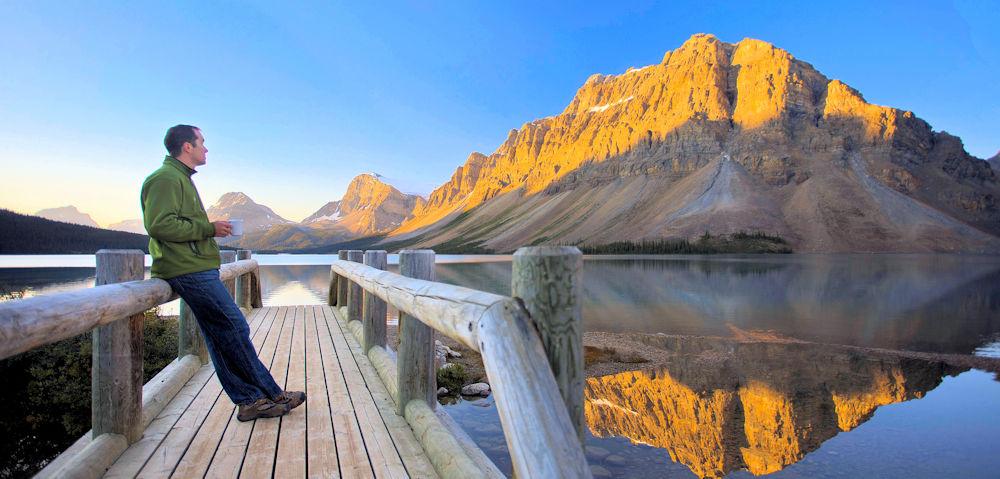 Read all reviews
Read all reviews
0
100
 Read all reviews
Read all reviews
0
100
Alberta is located in western Canada, bounded by the provinces of British Columbia to the west and Saskatchewan to the east. To its east are immense coloured prairies while the towering Rocky Mountains dominate the southwestern aspect. Alberta is characterised by numerous ranches and livestock farms as well as the two modern cities of Calgary and Edmonton, the capital. Alberta is also home to some of the most beautiful national parks in the country, Jasper and Banff to the west, Waterton Lakes on its southern edge and Wood Buffalo to the north.
Calgary is located in the south of the province, in an area of foothills and prairies. Its cattle rearing heritage gave the city the nickname of ‘Cow Town’. In 1988, Calgary became the first Canadian city to host the Winter Olympic Games which has left behind such legacies as the Canada Olympic Park and the Olympic Plaza. Also known as ‘The Stampede City’ after the Calgary Stampede, this annual rodeo, exhibition, and the festival is held every July and modestly bills itself ‘The Greatest Outdoor Show on Earth.
Edmonton, Canada’s fifth largest city is located in the centre of the province and its biggest claim to fame is the West Edmonton Mall, the largest shopping mall in North America . A large water park, an amusement park, a gigantic ice rink, hundreds of stores and restaurants await!
Alberta wows with the naturally stunning route from Jasper to Banff, through the heart of the Rockies. The little town of Jasper grew thanks to the arrival of the railway, a feat of engineering which brought the railroad through the Rocky Mountains over a century ago. To the south, is the Whistlers Mountain area which is best appreciated from the air on the Jasper Skytram. To the north, explore the most spectacular canyon in the Canadian Rockies - Maligne Canyon. Not only here, but across the entire province, you'll find plenty of hiking, wildlife, geological gems and the most spectacular scenery.
Moving south from Jasper, enjoy a bucket list drive along one of the most famous routes in the world - the ‘Icefields Parkway.’ At just over 200 miles, the parkway links Jasper to Banff National Park along the Continental Divide.
This may be the highlight of your holiday as the journey is full epic scenery, glaciers, wildlife and alpine lakes - including Peyto Lake, arguably the greenest of all the lakes of the Canadian Rockies. Cross into Banff and you'll be amazed by yet another stunning body of water - Lake Louise with yet again an unimaginable colour of blue. Nearby Moraine Lake, which is featured on the Canadian $20 bill, is surrounded by forests which seem to throw themselves into the water.
The town of Banff on the southern edge of the park is an alpine settlement literally bubbling from its two hot springs. Besides the many interesting trails, Banff is home to the Cave and Basin National Historic Site, Upper Hot Springs and Sulphur Mountain Gondola ride. A beautiful walk to the Banff Springs Hotel, an historic building and one of the original ‘railway’ hotels of Canada, will allow you to admire Bow Falls.
Waterton Lakes National Park in the southern part of the province continues into the U.S. State of Montana as Glacier National Park. The lack of transition between the plain and the high peaks is astounding and brings to mind the same dramatic contrast seen in the Grand Teton National Park to the south of Yellowstone in Wyoming. One of the characteristics here is the richness of the ecosystem and its wildlife. It is not rare to come across a mountain goat on the steep slopes or to see a mountain lion (puma) or even a bear.
Where you stay is the heart of your holiday. Location reigns supreme but do you prefer resort facilities or unique and boutique? Historic and old world or modern and shiny?
We aim to present choices across the spectrum but there are many hundreds of places to stay and not room to feature them all. Do speak to your Bon Voyage travel consultant and click the video for our take on this important topic.

